Boat ramps come in all different shapes and sizes — big ones, small ones, long ones, skinny ones. Some are nothing more than a nondescript strip leading onto a deserted sandy beach and others are like busy concrete highways. No matter the ramp, they all come with their challenges, and can be a daunting experience for boaties — amateurs and pros alike. In this complete guide, we’ll give you the scoop on how to safely launch and retrieve your rig. Grab your keys and let’s go!
PREFLIGHT CHECK
Before you launch your baby into the big blue, make sure everything is running smoothly — preferably before hitting the ramp. First, flick on your batteries and make sure they’ve still got juice. Then give your donk a test. Turn it over quickly, make sure it’s running and then flick it off again. Outboards and most sterndrives are cooled with seawater, so they’ll overheat if left running for too long out of the drink. Be sure to tilt your outboard motor or stern leg back up and lock in position.

Next, you’ll need to make sure your trailer is connected to the tow rig. Check the tow ball is locked, safety chains attached and lights plugged in. Give the indicator and brake lights a test before you start driving. It also pays to make sure the boat is attached to the trailer correctly. Ensure the winch and straps are tight, and the safety chain connected.
In case you didn’t know, your tow vehicle has a maximum towing weight. You need to be aware of the total weight of your boat motor, trailer and payload. Another figure worth knowing is your GCM (gross combined mass). That’s the total allowable weight for your whole rig, with payload. Manufacturers set these weights for safety reasons. If you exceed these limits, then have an accident, there’s a good chance you won’t be covered by insurance.
Speaking of insurance, it’s a must when it comes to boats as unforeseen accidents are pretty common on the water (or the trailer). NRMA Insurance is The Captain’s pick — they protect you on and off the water. You can get a quote here.
Alright, your trailer is correctly connected to your tow vehicle, your boat is strapped down to the trailer and your boat’s engine is turning over fine. What to pack next? Winch handle, fenders, fishing rods, tackle box, bait — tick. It’s also a good idea to throw in a basic toolkit. Pliers can be bloody handy for removing tight D-shackles and spanners are better than fingers for tightening loose trailer bolts. Oh, and you’ll also need all your safety gear. We’ve compiled a list of equipment below, but regulations vary from state to state, so check with your local authority before getting your boat wet.
SAFETY EQUIPMENT
· Lifejacket (PFD type 1) for every person on board
· Anchor and chain
· Waterproof torch
· Bailer or bucket with lanyard
· Electric or manual bilge pump
· Fire extinguisher
· Paddles or a secondary propulsion method
· Sound signal
If you plan on heading into open water, you’ll also need the following items:
· Flares
· EPIRB (emergency position-indicating radio beacon)
· Marine radio
· V-sheet (international distress sheet)
· 2L of drinking water per person
· Compass
READY TO LAUNCH
Alright, you’ve made it to the ramp safety. Let’s get this baby in the water. If it’s your first time (don’t worry, we won’t tell anyone) or you’re still learning, we suggest practising during off-peak times. Midweek, around lunchtime, is usually a pretty safe bet for a nice and quiet boat ramp. If you’ve never been to the ramp before, it’s always a good idea to walk it first. Look for things like the best angle of approach, the amount of sand build-up (if any), if it’s weedy or slippery and, most importantly, how far the ramp actually goes into the water.
By now you should have a good mental picture of what the ramp looks like above and below the surface. Next step is to pull into the rigging bay. This is where you’ll queue up with other boaties to wait for your turn to launch (hopefully, there won’t be any because they’ll all be at work). This is where to prepare the boat for the water. Load in any remaining gear, turn on the batteries, remove the engine tilt lock if you have one, prime the fuel bulb, remove the straps — and screw in your bungs, baby! Forget the bung and you’ll be surprised how quickly your boat will turn into a submarine. If your trailer has mechanical brakes, you’ll need to disengage them. Remember, always leave your winch and safety chain connected until your boat is in the water.
Now you’re ready to rock, it’s time to pull out into the reserving zone. It’s your time to shine. Make sure you turn in nice and wide so you’re only taking up one lane, not the whole ramp. If it’s dark, turn off your headlights and turn on your parking lights so you don’t blind everyone in front of you. If you’ve got a heavy rig and 4WD, it pays to lock her into low range. Once everything is straight as an arrow, take a deep breath and start reversing down the ramp. You can either roll with the left arm on the passenger seat headrest using the look-behind-you technique or use your side mirrors to direct her down. You do this by lining your boat up nice and straight on the ramp then reversing — whenever you see more of the boat start to appear in your left mirror, turn to your left, and vice versa.
OK, so you’ve made it down the ramp. But where should you stop? It depends on your boat and trailer, but as a general rule of thumb, you want the rear wheels of your vehicle to stop just before the water’s edge. Before you jump out in excitement, don’t forget to put your vehicle in park and pull on the handbrake. And ramps can be seriously slippery, so watch your step as you exit the vehicle — a pair of shoes with good grip are handy for barnacle-encrusted ramps. Alright, that’s the hard part done. Let’s get your boat off the trailer. If you’re riding solo, it can be handy to have a bow rope attached so you can lead the boat off. If you’ve got someone skippering, tell them to lower the engine slightly into the water. If you tilt it down too far, you risk hitting the propellor on the ramp when your boat slides off.
Now, remove the safety chain, attach the winch handle and use it to take the pressure off the cable. If your trailer skids or rollers are particularly slippery, you may need to put the boat in forward gear to remove the tension. You can now unclip the winch cable and give the thumbs up to the skipper that they’re clear to reverse the boat off. All boats and trailers will require slightly different launching methods. The most important thing is getting confident with your rig and having good communication with your deckhands.
With your boat afloat, try to park it in an area that doesn’t impede other ramp users. If you’re pulling up to a wharf or pontoon, throw out your fenders to prevent scuffs. If you’re flying solo, once the boat is secure, move your vehicle and trailer off the ramp as quickly as possible. If you’ve got help, the boat and trailer should be moved off the ramp as soon as the boat is off the trailer. If you’re planning on heading out for a long trip, it’s also a good idea to rinse the salt off the trailer prior to leaving it in the carpark. While your boat is off the trailer, it’s also a great idea to check over your trailer for any loose nuts and bolts, and inspect the rollers or skids.
Also consider the security of your trailer while you’re gone. Perhaps consider a trailer or drawbar lock — throwing a tow ball lock over the trailer coupling can deter thieves. And simply reversing into a bay can also make it harder for sticky-fingered crooks.
TIME TO RETRIEVE
Alright, you’ve got an esky full of kingies and it’s time to take them home to impress your other half. Let’s get this thing back on the trailer. First off, if you’ve got a deckhand, drop them onto the pontoon or beach so they can grab the tow vehicle — and don’t forget the car keys! If you’re riding solo, whip out the fenders and tie your boat up, ideally somewhere that doesn’t impede the ramp for other users. When you (or your deckie) get back to the vehicle and trailer, make sure nobody has tampered with anything. Check the tyres have air, jockey wheel is up, tow ball still locked, lights connected and safety chains hooked up. This might seem over the top, but it’s better to be safe than sorry.
If everything looks good, head back to the ramp and repeat what you did when launching. Wait your turn, then back down the ramp slowly. It can be a little trickier without your boat on the trailer, as it’s so low you won’t be able to see it in your mirrors. A handy trick is to reverse down the ramp with your boot open. This will let you see the trailer when looking behind you or in your rear-view mirror. Otherwise, stick with the side mirror tip mentioned previously.
OK, back on the boat. While you’re waiting for your mate to reverse down the ramp, it’s a good idea to check out what the current and wind are doing. Line up the bow in the direction of the ramp and whack the engine in neutral. Take note of the direction and speed of your drift. If the current is pushing you hard to the right, compensate by aiming a couple of metres to the left of the trailer. As you approach, have the leg of your engine slightly tilted up so as not to hit the bottom of the ramp. Be careful not to tilt it up too far or you’ll lose traction on the water. As you get closer to the trailer, pull the boat out of gear and drift the remaining few metres so as to touch down softly. Note, even with your engine in neutral, the leg will still act as a rudder, so don’t forget to keep steering. If the angle of approach isn’t looking good, don’t be afraid to throw your boat into reverse and try again.
When the hull has made contact with the first trailer roller and the boat is on a straight angle, it’s time to hit the throttle again. Knock the engine into forward gear and slowly give it more revs until your boat starts to drive onto the trailer. Now is also a good time to tilt your engine up a little higher as the stern of the boat will be closer to the ramp. Drive the boat as far as you can up the trailer and leave it in forward gear until the winch strap has been clipped on. Once secured and winched up to the bow roller, you can kill the engine and tilt it all the way out of the water. Before driving off the ramp, be sure to reattach the safety chain to the bow eye.
Now you’re good to drive off the ramp and pull into the de-rigging bay. Here, you’ll reengage your trailer’s mechanical brakes, pull out your bungs, attach your straps and bring down any fishing rods, outriggers or aerials that might hit low-hanging trees or powerlines on the way home. If there is a cleaning bay, it’s always a good idea to wash the salt off your boat and flush out your engine on the spot.
Boom, it’s as easy as that.

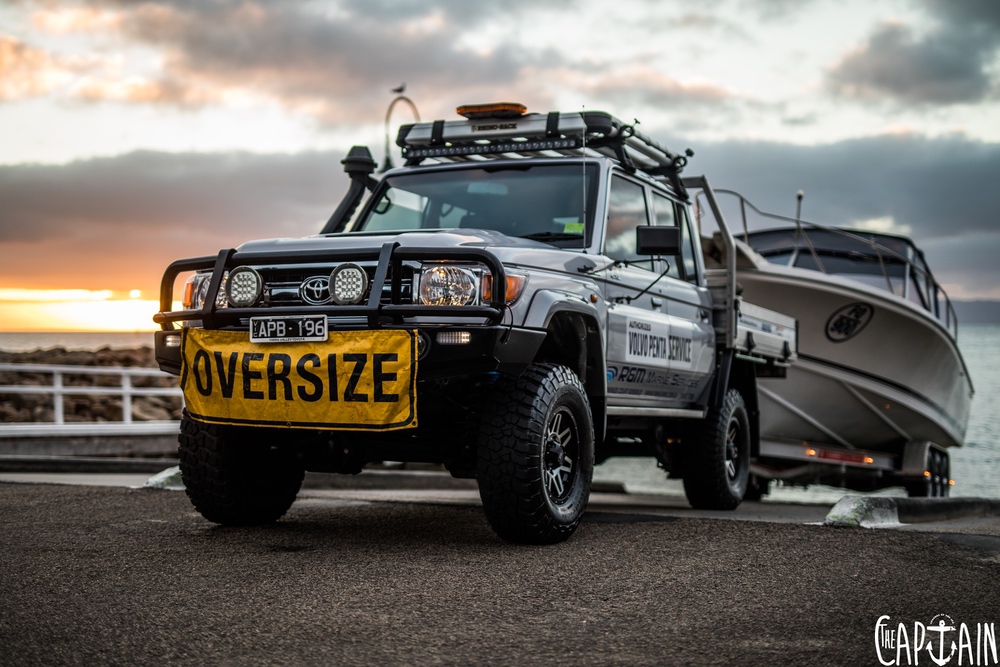
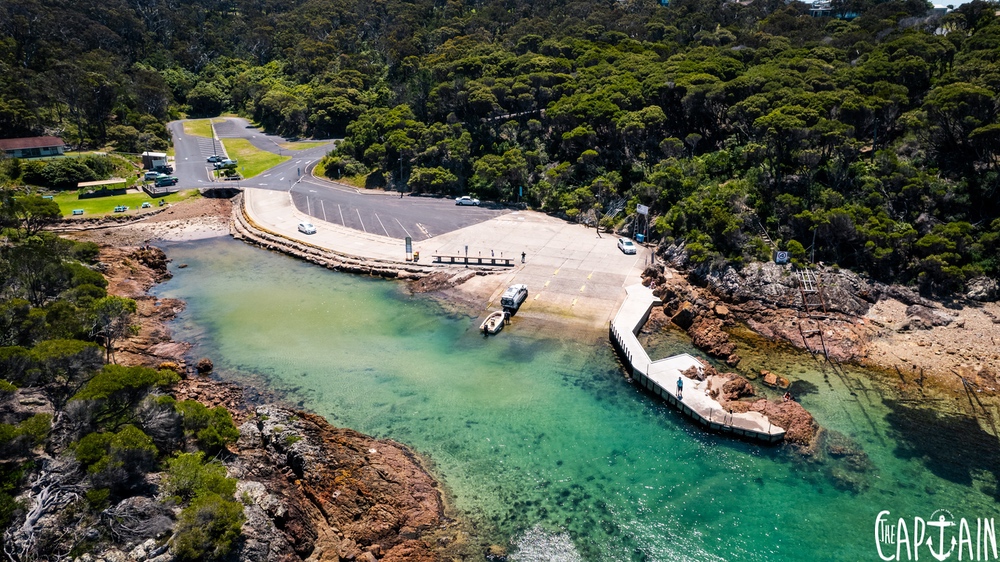

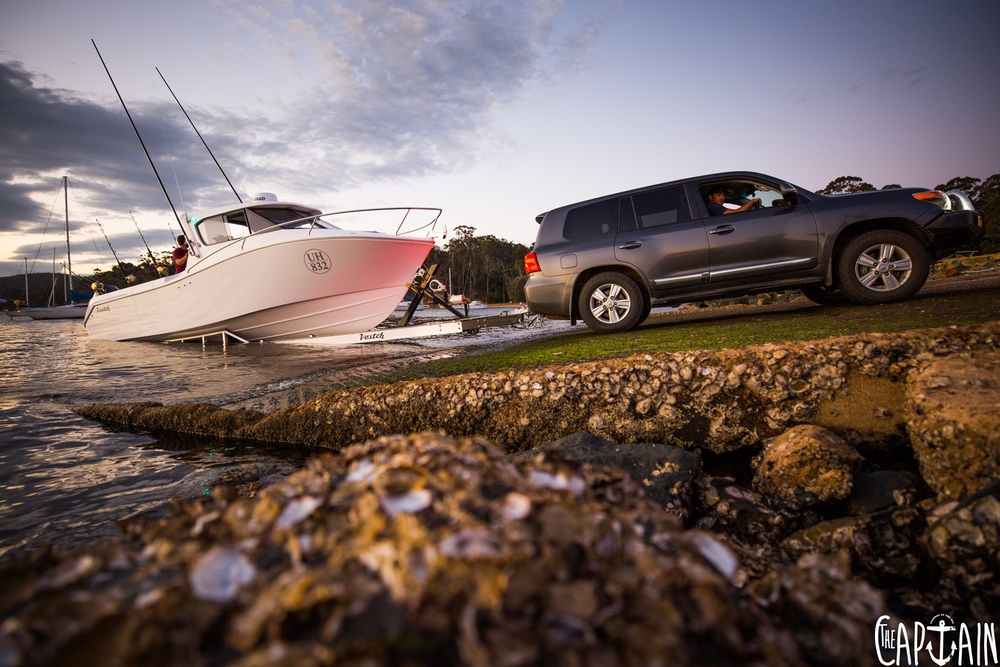
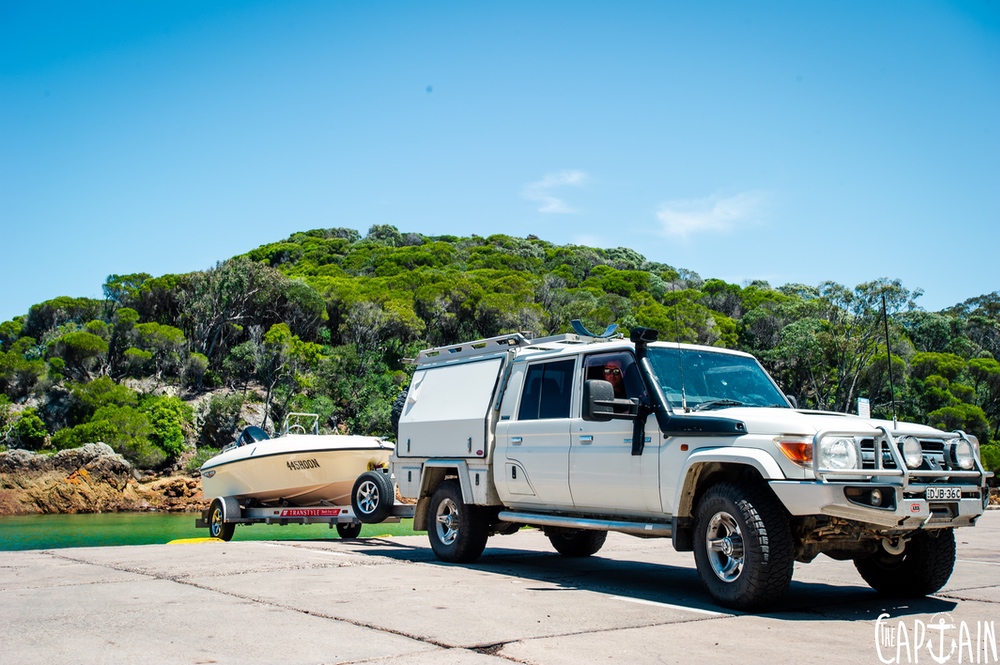
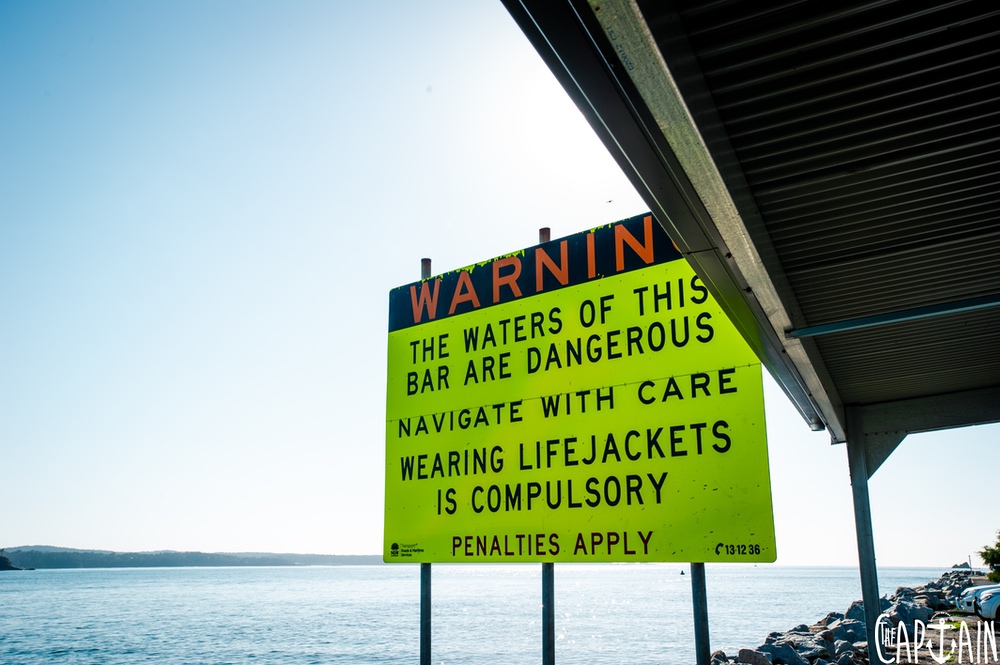
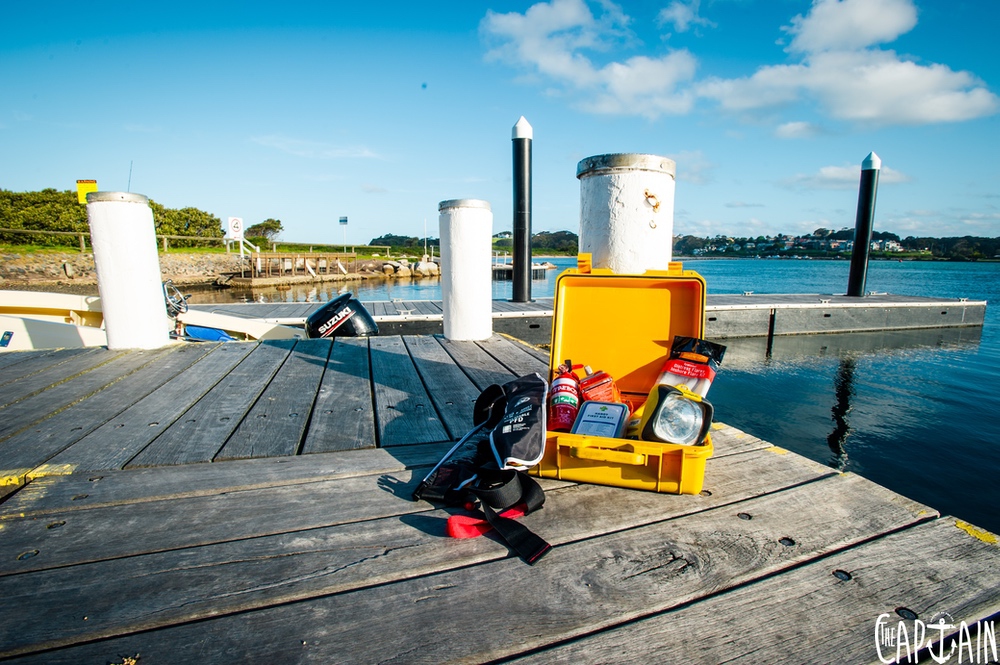

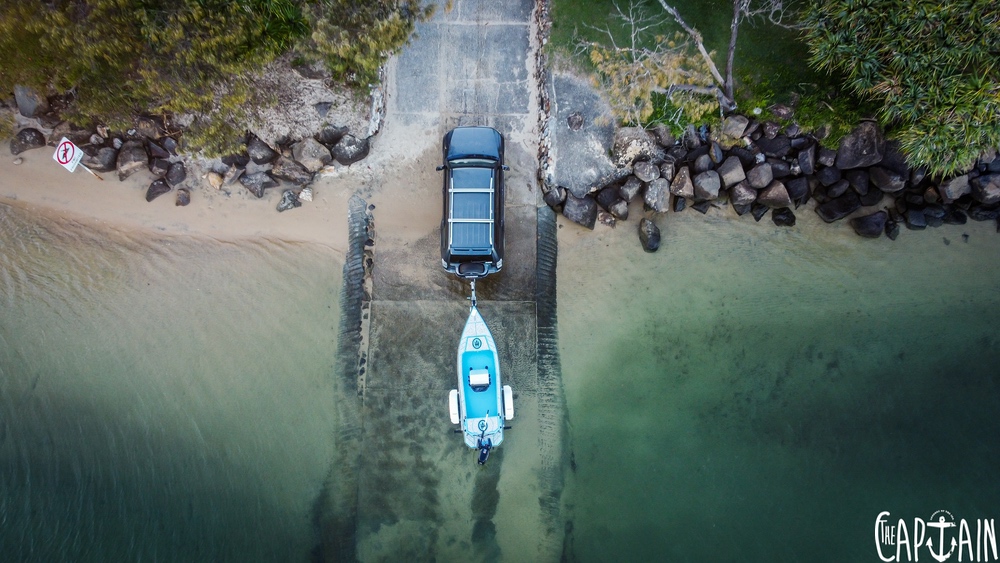






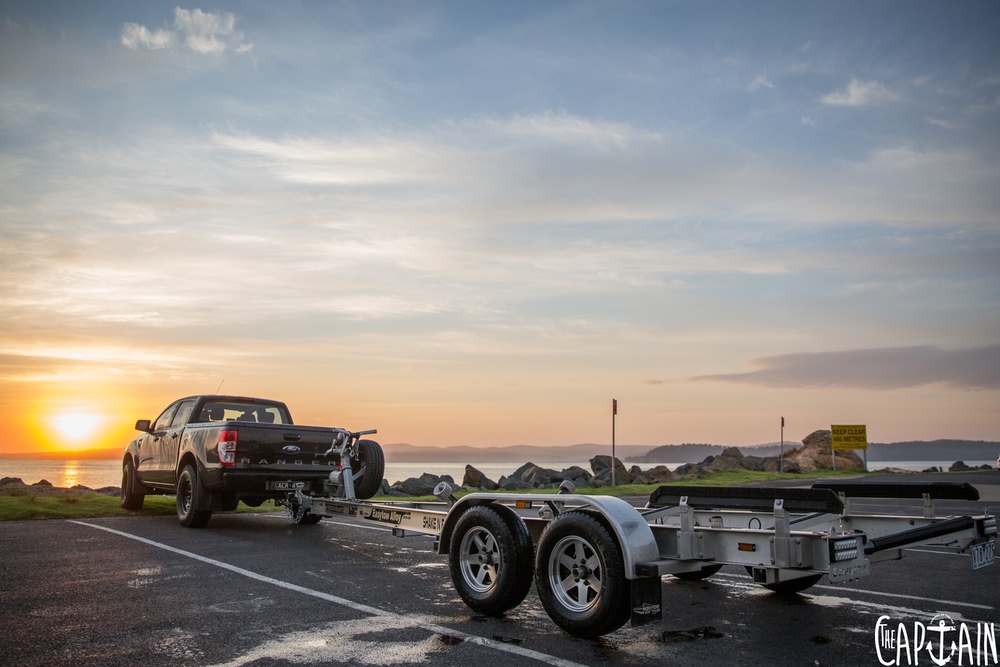




Recent Comments